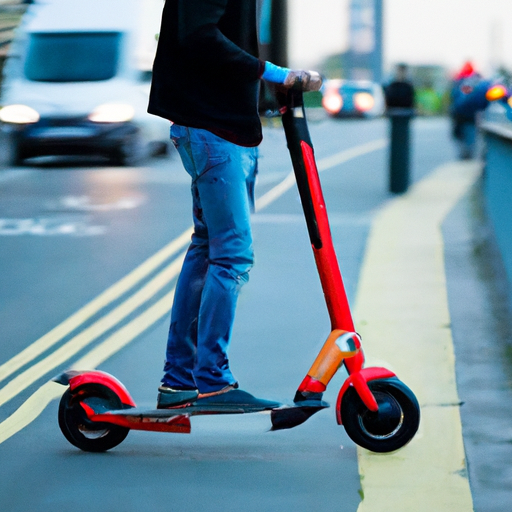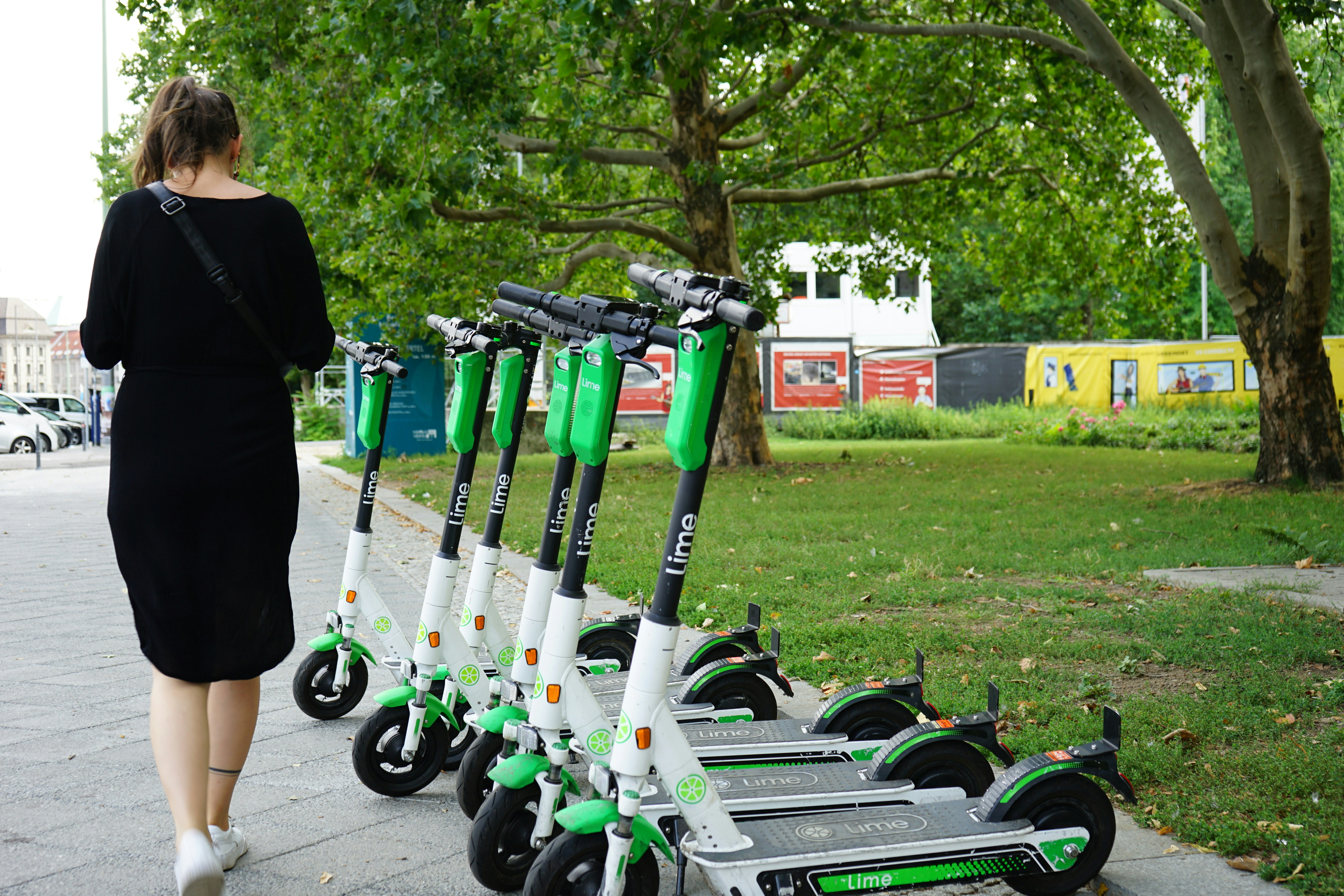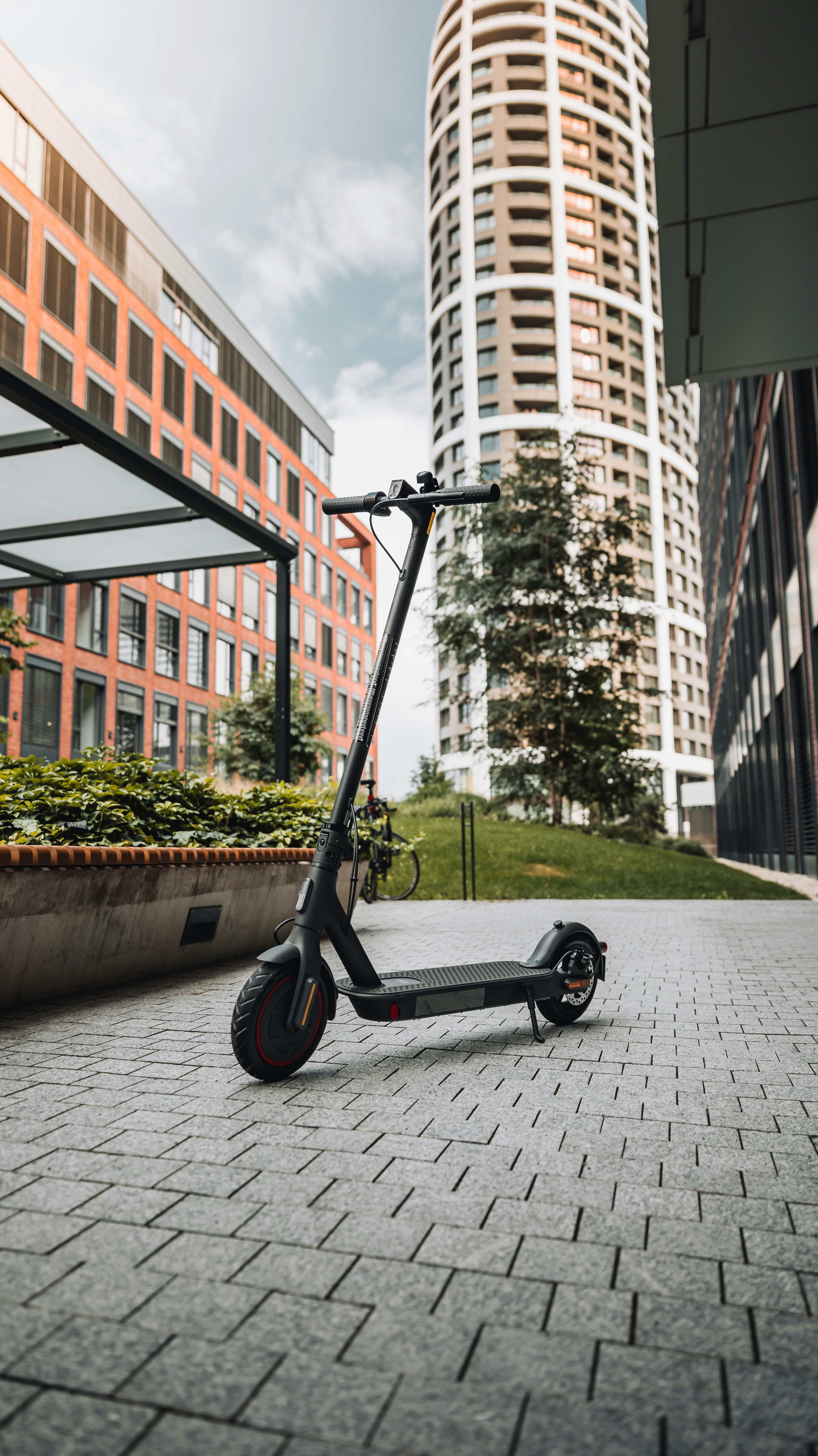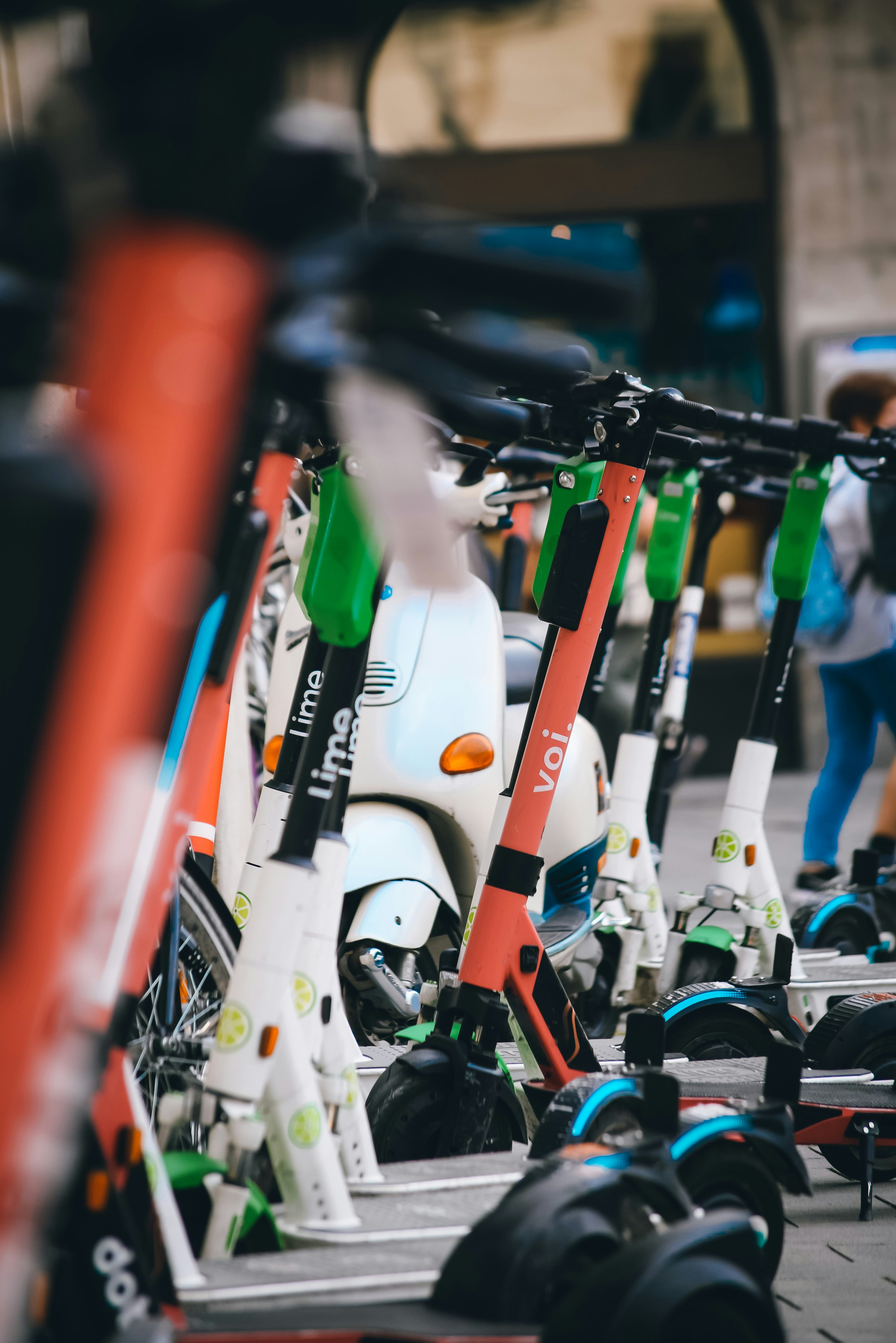Discover the future of transportation in the UK with fast e-scooters. Learn about their rising popularity and benefits, legislation and regulations, advancements in technology, infrastructure requirements, environmental impact, safety considerations, and economic factors. Join us on this exciting journey into the future of transportation!
Hello there! In this article, we’ll be taking a closer look at the future of transportation in the UK, specifically focusing on fast e-scooters. You’ll learn about the rising popularity of these electric scooters, their benefits, and how they are transforming the way we travel. So sit back, relax, and join us on this exciting journey into the future of transportation in the UK!
Introduction to Fast e Scooters
Fast e scooters have become a popular and convenient mode of transportation in the UK. With advancements in technology, these electric scooters have evolved into a fast and efficient means of getting around town. In this article, we will explore the benefits and challenges of using fast e scooters, the current legislation and regulations surrounding their use, advancements in e scooter technology, the infrastructure required to support them, the environmental impact they have, safety considerations, economic factors, and the future outlook for fast e scooters in the UK.
Advancements in Electric Scooters
In recent years, electric scooters have undergone significant advancements in technology. The introduction of more powerful motors and longer-lasting batteries has allowed these scooters to reach higher speeds and travel longer distances on a single charge. This has made them a viable alternative to traditional modes of transportation, such as cars and bicycles. Fast e scooters can now reach speeds of up to 30 miles per hour, making them a convenient and efficient way to navigate through traffic.
Increasing Popularity of E-Scooters in the UK
The popularity of e scooters has been on the rise in the UK. They have become particularly popular among urban residents who are looking for a cost-effective and environmentally friendly mode of transportation. The ease of use and maneuverability of these scooters make them ideal for navigating through busy city streets. Additionally, the compact size of e scooters allows for easy storage and parking, making them a convenient choice for urban dwellers.
Benefits of Fast e Scooters
There are several benefits to using fast e scooters for your daily commute. One of the major advantages is the cost savings compared to traditional modes of transportation. E scooters are much more affordable to purchase and maintain than cars, and they require minimal fuel costs. They also have lower insurance premiums and no road tax, making them a cost-effective option for daily transportation. Furthermore, fast e scooters are environmentally friendly as they produce zero emissions and contribute to reducing air pollution.
Legislation and Regulations
Current Laws Regarding Fast e Scooters in the UK
As of now, the use of fast e scooters on public roads in the UK is illegal. Under current legislation, e scooters are categorized as motor vehicles and therefore require registration, insurance, a driving license, and compliance with various road traffic regulations. However, it is worth noting that there are ongoing discussions and trials in several cities to legalize and regulate the use of e scooters on public roads.
Efforts to Legalize E-Scooters
Many cities in the UK are actively exploring the possibility of legalizing e scooters and creating dedicated infrastructure for their use. Various trials and pilot schemes are underway to assess the feasibility and impact of e scooters on public roads. These trials aim to gather data on safety, sustainability, and the integration of e scooters into existing transportation networks. If successful, these trials could lead to the legalization and regulation of e scooters in the near future.
Safety Regulations and Requirements
When it comes to e scooter safety, there are several regulations and requirements that need to be considered. These include wearing a helmet, using appropriate safety equipment, and adhering to traffic rules. The enforcement of these regulations is crucial to ensure the safety of both e scooter riders and other road users. Furthermore, there is a need for increased public awareness and education programs to promote safe e scooter riding and raise awareness of potential risks and challenges.
Infrastructure for E-Scooters
Dedicated E-Scooter Lanes
To support the increasing use of e scooters, dedicated lanes need to be created to provide a safe and efficient passage for riders. These lanes can be integrated into existing cycling infrastructure or developed separately. Dedicated e scooter lanes would help to separate e scooter riders from other road users, reducing the risk of accidents and promoting efficient traffic flow. Furthermore, these lanes can be equipped with charging stations and amenities to enhance riders’ experience.
Charging Stations and Battery Swapping
As e scooters rely on batteries, it is essential to establish a robust charging infrastructure to support their use. Public charging stations strategically located throughout cities would allow riders to conveniently recharge their scooters. Battery swapping stations can also be implemented, allowing riders to exchange depleted batteries for fully charged ones, reducing downtime and increasing the range of e scooters. A well-developed charging infrastructure would eliminate range anxiety and encourage the use of e scooters for longer journeys.
Integration with Public Transportation
Integrating e scooters with existing public transportation networks can further enhance their convenience and accessibility. By providing designated areas for parking and easy access to public transport hubs, riders can seamlessly switch between different modes of transportation. This integration would encourage more people to use e scooters for the first and last mile of their daily commute, reducing congestion and improving overall transportation efficiency.
Advancements in E-Scooter Technology
Longer Battery Life and Faster Charging
Advancements in battery technology have significantly improved the range and charging time of e scooters. Lithium-ion batteries, with higher energy densities, have allowed for longer rides on a single charge. Additionally, rapid charging technologies, such as fast-charging and swappable battery systems, have reduced charging times, making it more convenient for riders. These advancements have addressed the issue of limited range and allowed for more practical and efficient use of e scooters.
Improved Motor Efficiency and Power
The efficiency and power of e scooter motors have seen considerable improvements in recent years. Brushless DC motors, with their higher power-to-weight ratios and improved efficiency, have enabled faster acceleration and higher top speeds. These advancements have made fast e scooters a viable option for those seeking a quick and efficient mode of transportation. The improved motor performance also ensures a smoother and more comfortable ride for the user.
Smart Features and Connectivity
E scooters are becoming smarter with the integration of advanced features and connectivity options. GPS navigation systems, speed limiters, and smartphone apps are just a few examples of the smart features that can enhance the user experience. These features provide real-time data, such as battery status, estimated range, and traffic conditions, improving the convenience and safety of using e scooters. Additionally, connectivity options allow for remote diagnostics and software updates, ensuring that e scooters are always up to date with the latest technology.
E-Scooter Sharing Programs
Introduction of E-Scooter Sharing Services
E-scooter sharing programs have gained significant traction in recent years. These programs allow riders to rent e scooters for short periods of time, typically through a smartphone app. E-scooter sharing services have become increasingly popular due to their convenience and affordability. Riders can locate and unlock available scooters using the app, providing an on-demand transportation solution for short trips around the city.
Benefits and Challenges of E-Scooter Sharing
E-scooter sharing programs offer several benefits to users and cities alike. They provide a convenient and eco-friendly mode of transportation for short trips, reducing reliance on cars and alleviating congestion. Additionally, these programs promote active mobility and can improve public health by encouraging physical activity. However, e-scooter sharing also poses challenges, such as managing large fleets of scooters, ensuring proper maintenance and safety checks, and addressing issues related to parking and sidewalk clutter.
Expansion of E-Scooter Networks
As e-scooter sharing programs gain popularity, the networks are expanding to cover more cities and regions in the UK. This expansion allows for greater accessibility and convenience for users. With larger e-scooter fleets available, users can easily find and use an e scooter when needed. In addition to major cities, e-scooter sharing programs are being introduced in smaller towns and suburbs, providing a viable alternative to traditional transportation options in these areas.
Environmental Impact
Reduced Carbon Footprint
One of the most significant environmental benefits of fast e scooters is their reduced carbon footprint. By using electric power instead of fossil fuels, e scooters produce zero tailpipe emissions, contributing to the reduction of greenhouse gases. Transitioning from traditional gasoline-powered vehicles to e scooters can help to combat climate change and improve air quality in urban areas.
Air Pollution Reduction
E scooters also contribute to reducing air pollution in congested cities. Vehicle emissions, particularly from cars and motorcycles, are a major source of air pollutants, including nitrogen oxides and particulate matter. By replacing a portion of these vehicles with e scooters, cities can achieve a noticeable reduction in air pollution levels. This not only benefits the environment but also improves public health, as exposure to air pollutants has been linked to respiratory and cardiovascular diseases.
Congestion Alleviation
Fast e scooters can play a role in alleviating traffic congestion in urban areas. With their small size and maneuverability, e scooters can navigate through traffic more easily than cars, reducing congestion on busy roads. Additionally, e scooters take up less space for parking, freeing up valuable parking spots in crowded city centers. Encouraging the use of e scooters for short trips can help to reduce overall traffic volume and improve traffic flow in congested cities.

Safety and Accident Prevention
Education and Awareness Programs
To ensure the safety of e scooter riders and other road users, education and awareness programs are crucial. These programs should focus on educating riders about the rules of the road, safe riding practices, and the importance of wearing helmets and protective gear. Public awareness campaigns can also help to promote mutual respect and awareness between e scooter riders, cyclists, pedestrians, and motorists, reducing the risk of accidents.
Helmet Usage and Safety Standards
The use of helmets is essential for e scooter riders to protect themselves in the event of an accident. Promoting and enforcing helmet usage can significantly reduce the risk of head injuries. Additionally, it is crucial to establish safety standards and regulations for e scooters to ensure that they are built and maintained to a high standard. Regular maintenance checks and safety inspections can help prevent accidents caused by faulty equipment.
Integration with Traffic Systems
Integrating e scooters into existing traffic systems is an important step in ensuring road safety. Developing appropriate infrastructure, such as designated lanes and signage, can help e scooter riders navigate through traffic safely. Additionally, incorporating e scooter data into traffic management systems can help optimize traffic flow and ensure the safe interaction of e scooters with other road users.
Economic Considerations
Job Creation and Economic Stimulus
The growing e scooter industry has the potential to create jobs and stimulate economic growth. From manufacturing and maintenance to charging and fleet management, e scooters require a range of services that can generate employment opportunities. Additionally, e scooter sharing programs can bring economic benefits to cities by attracting tourists, boosting the local economy, and increasing revenue from licensing and permits.
Effect on Traditional Transportation Industries
The rise of e scooters has the potential to impact traditional transportation industries. The shift from car ownership to e scooter usage can reduce the demand for traditional car sales and car rental services. Similarly, e scooters can compete with cycling and walking as more people opt for this convenient mode of transportation. Traditional transportation industries will need to adapt and explore new opportunities to remain relevant in the changing landscape.
Potential Revenue Generation
As the e scooter industry continues to grow, there are opportunities for cities and businesses to generate revenue. Licensing fees, permits, and taxes on e scooters and e scooter sharing programs can provide a new stream of income for governments and local authorities. Additionally, e scooter charging infrastructure and services can be monetized through partnerships and advertising, further contributing to the potential revenue generation.

Challenges and Future Outlook
Addressing Infrastructure Limitations
One of the key challenges for e scooters in the UK is the lack of dedicated infrastructure to support their use. The creation of dedicated e scooter lanes, charging stations, and parking areas is essential to provide a safe and efficient environment for e scooter riders. Addressing these infrastructure limitations will require collaboration between local authorities, transportation agencies, and e scooter companies to ensure a comprehensive and interconnected network.
Public Perception and Acceptance
Public perception and acceptance of e scooters play a significant role in their future outlook. Some concerns raised by the public include safety issues, sidewalk clutter, and the impact on pedestrian rights-of-way. Addressing these concerns through well-designed regulations, public awareness campaigns, and effective enforcement measures is crucial to gaining public acceptance and support for e scooters as a viable mode of transportation.
Integration with Autonomous Vehicles
As the development of autonomous vehicles progresses, there is a possibility for e scooters to integrate with this emerging technology. The seamless integration of autonomous e scooters and autonomous vehicles can lead to increased safety and efficiency on the roads. Additionally, autonomous e scooters could be incorporated into shared mobility platforms, enhancing the overall transportation ecosystem and offering users a broader range of options for their daily commute.
Conclusion
Fast e scooters have the potential to revolutionize transportation in the UK. With advancements in technology, these electric scooters offer a fast, efficient, and eco-friendly alternative for urban commuters. However, several challenges need to be addressed, including legislation and regulation, infrastructure development, safety considerations, and public acceptance. By overcoming these challenges, e scooters can become an integral part of the transportation landscape, providing a sustainable and convenient mode of transportation for commuters across the UK.




